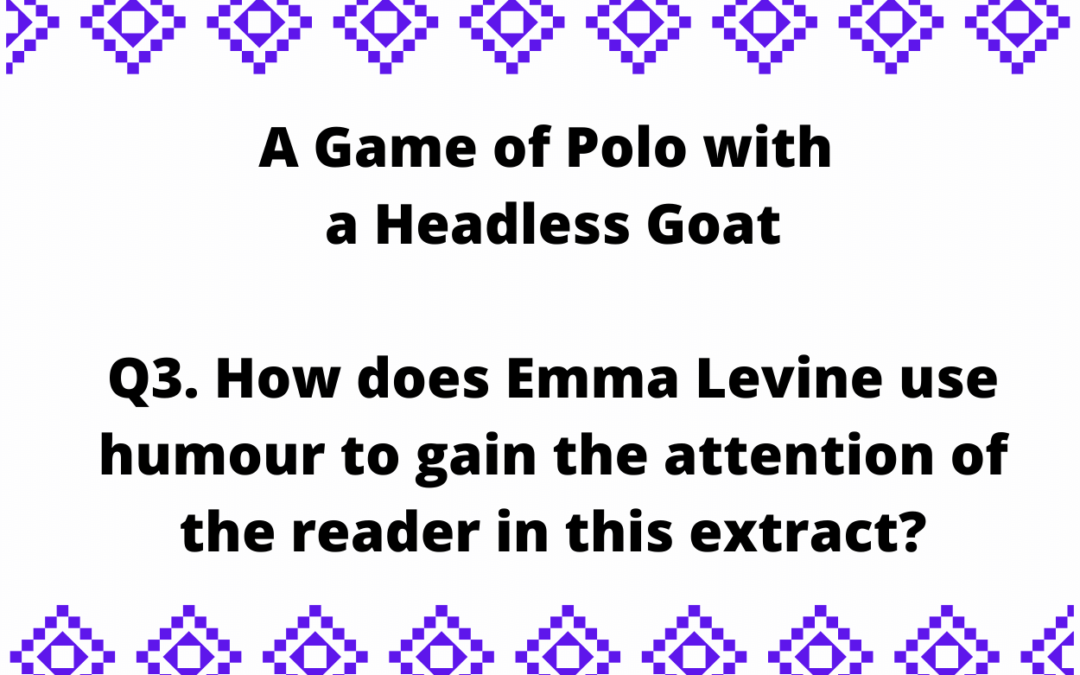Edexcel English IGCSE: A Game of Polo with a Headless Goat by Emma Levine
How does Emma Levine use humour to gain the attention of the reader in this extract?
Edexcel English IGCSE Model Essay by an Expert
As a travel-writer, Levine uses humour to portray the unfamiliarity of different cultures in a fond, light-hearted way. In this passage, the humour lies in the strangeness of Levine’s position, the race itself, and Yaqoob’s reckless style of driving. By humorously emphasising the bizarre nature of the scene, Levine captures the reader’s attention and makes them want to read on.
Before the race, Levine is in an amusingly strange position, which is made more funny by the fact that she has to wait there for an unexpectedly long time. In the first paragraph, the guides suggest that Levine climb into the boot of the car to get the best view of the race. Once she is in her bizarre position, “perched” in the boot, the humour of the situation is heightened when she has to wait there for “eternity”. This use of hyperbole humorously emphasises the length of their wait. The comedy here lies in the contrast between the uncomfortable and temporary position suggested by the word “perched” and the length of time she actually has to wait there.
The race is portrayed as exciting and tense, but there are also elements of humour because of the ridiculous nature of some elements. Levine plays with scale and size to portray the absurdity of the race: for example, the donkeys are “dwarfed by their entourage” – again using hyperbole to heighten the humour – and the jockeys are “perched” on the “tiny carts”, the contrast here creating a ridiculous image. Another technique that grabs the reader’s attention is the humorously comparison between the race and scenes familiar to the reader: “Formula One without rules” and “city-centre rush hour gone anarchic”. These familiar scenes are given a humorously unfamiliar twist, allowing Levine to portray the weirdness of the scene to the reader in a witty way.
Levine also creates humour by describing Yaqoob’s reckless driving in a light-hearted way. In the seventh paragraph, she uses a hyperbolic description to portray Yaqoob’s driving, using the extended metaphor of an animalistic hunt: the race is described as “survival of the fittest”; the descriptions of the speed and agility of the car could be used for an animal, such as “quick reflexes” and “nerves of steel”; and the use of lists and disjointed sentences contributes to a sense of breathless excitement. The drama created in this description is both exciting and humorous in its sense of exaggeration.
The passage ends with the comical revelation that Yaqoob isn’t a licensed driver. This is “hilarious” for the guides and also for the reader (although Levine herself was more concerned about their safety). This funny confession also lends retrospective humour to Levine’s complimentary approach to Yaqoob’s driving skills earlier in the passage.



